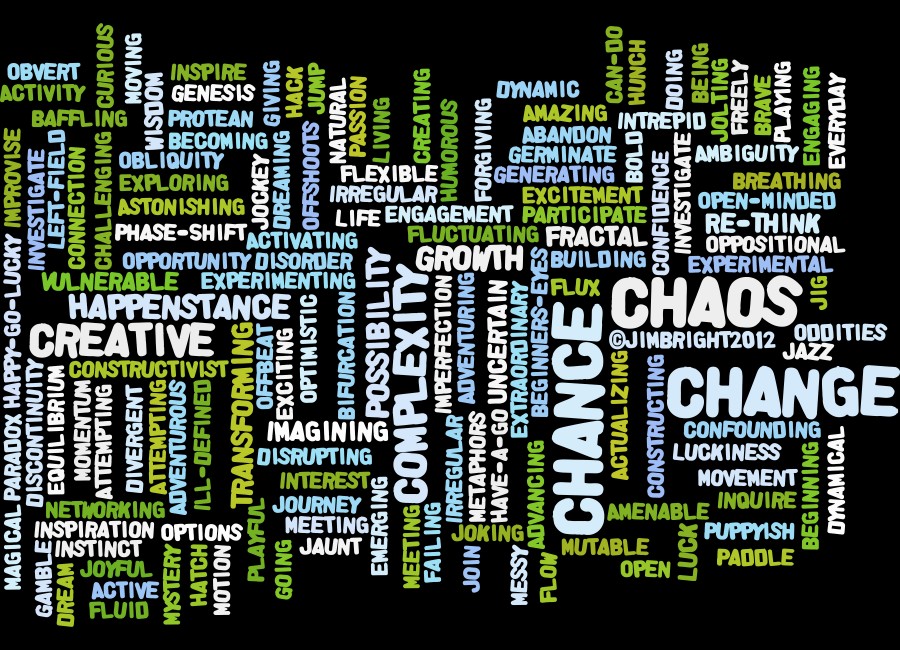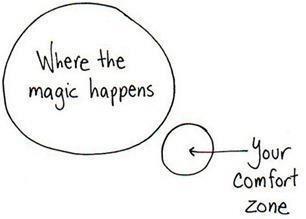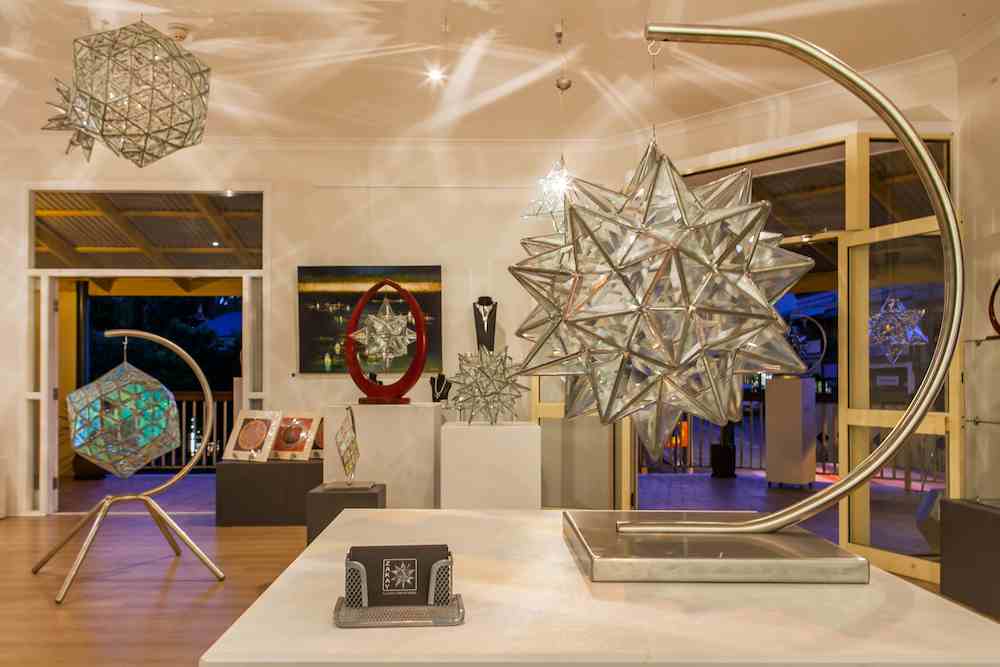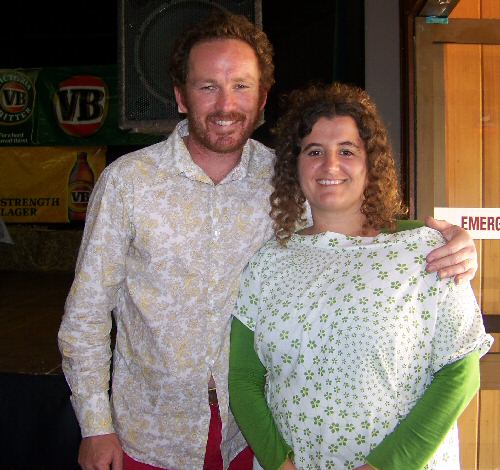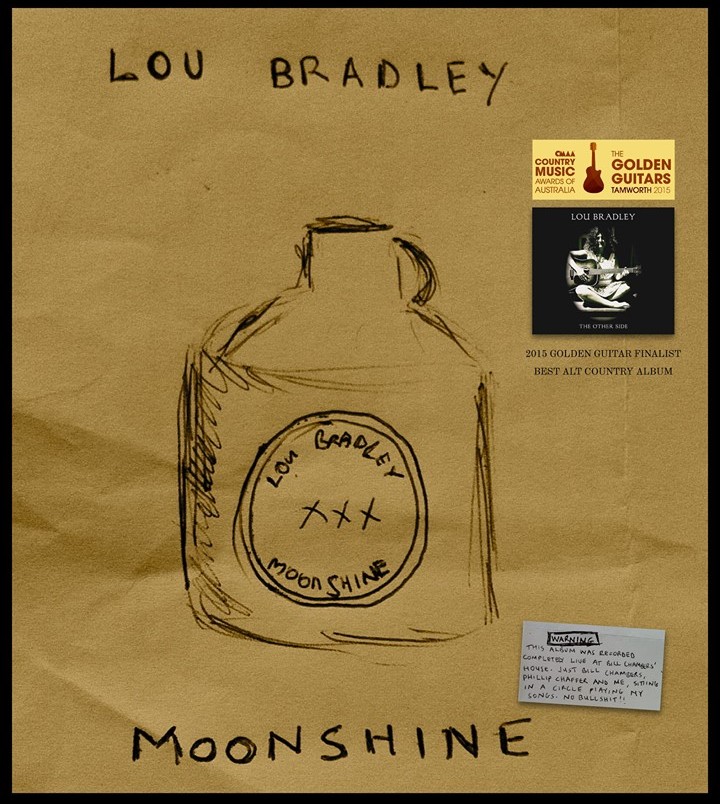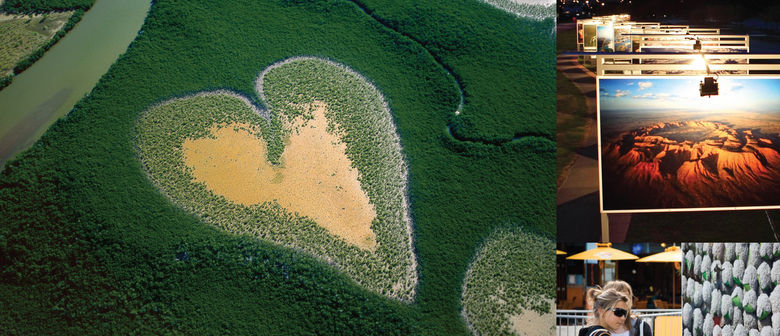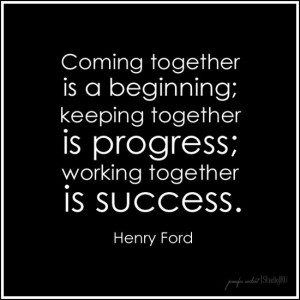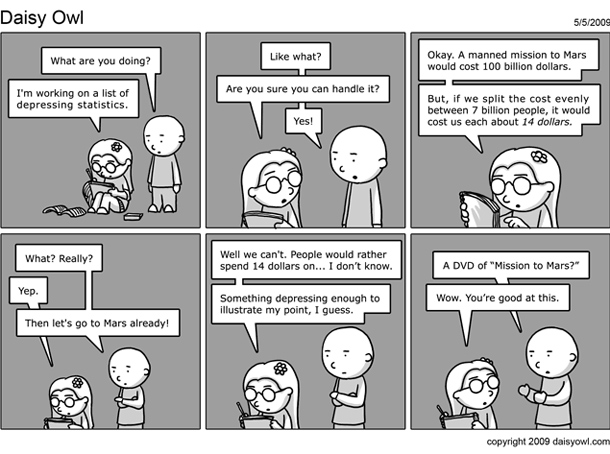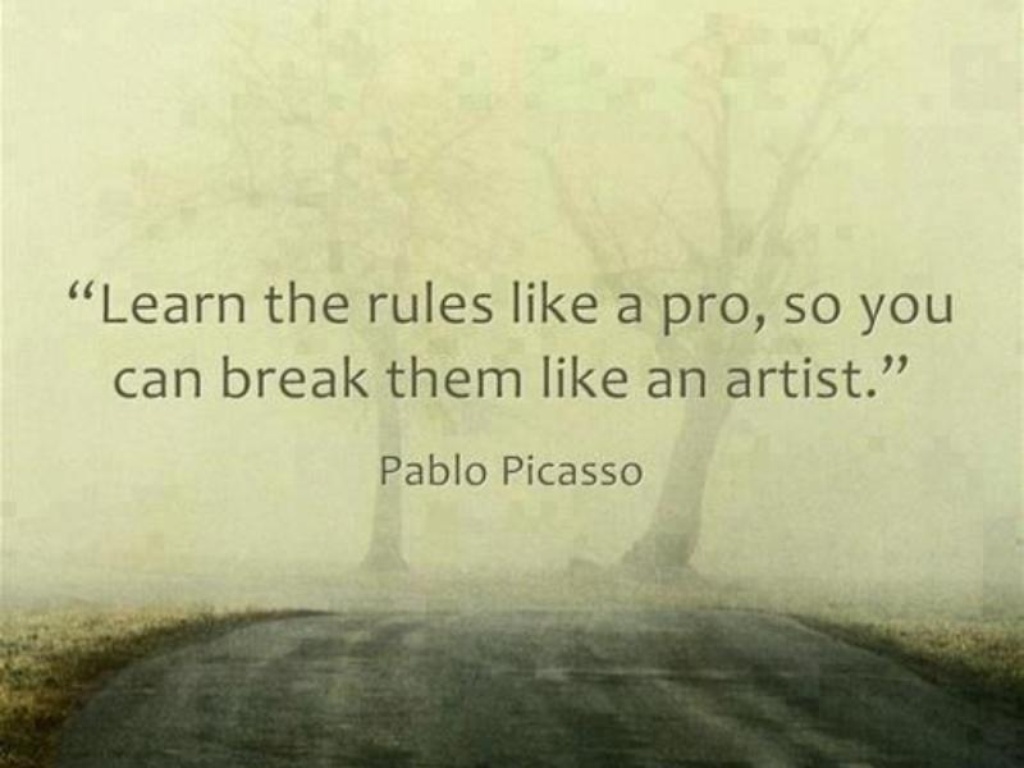The post Be an activated arts activist this summer appeared first on .
]]>Here in the Northern Rivers we are statistically on fertile creative ground with the highest concentration of arts-practitioners outside of Melbourne and Sydney. It’s an area abundant with galleries, theatre groups, circus, dance, music venues, artisan markets, open studios and festivals galore. Arts-activism is a no-brainer and an absolute pleasure. So this silly season get on down to any of the multitudes of artisan markets, buy handmade Chrissy presents, check out some original live music, head to a festival or two, fire up your own creativity or take a trip to the theatre.
Those of you outside of the arts may be unaware that the former and current liberal government has been taking to the arts with a machete. Funding for the arts is being slashed and creative industries are being forced into a state of fight or flight. Reframe how you work in the arts or get the hell out of the creative industry boat before it sinks with you in it. Shitty hey? As an arts business consultant the current situation quite frankly plays right into my fighting hands! My business is built on seeing arts practitioners, from performers to painters, develop their craft and share it with the world. I want artists to prove to the government that the arts is one of the most precious parts of our lives by flourishing in spite of the current political climate that seems hell-bent on trampling on an already fragile industry. I want to see arts-practitioners rise to the occasion by continuing to do what they do, bigger and brighter and this is where you, the arts lover, come in and it’s dead easy, super affordable and great fun! You’ll not only be giving the government the proverbial finger, you’ll also be boosting your well being, making your life more joyous and beautiful, connecting with a shared human condition and filling the kitty with lovely things and transformative experiences.
Here are 10 simple things you can do to celebrate the arts in our Northern Rivers and Australian culture –
- Buy handmade this Christmas (ethical and usually low miles too!)
- Flex your creative muscles and take a dance, music, circus, writing or art class.
- Get a group of friends together to go to a comedy, theatre or dance performance.
- Head to your local gallery or open studio.
- Eat and drink at venues that have live, original musicians playing.
- Go to a music festival.
- Watch a movie at the cinema.
- Redecorate your home with original artworks.
- Throw a busker you enjoy a gold coin or two and better still buy their CD so you can enjoy their music at all hours.
- Buy a book, head to the beach and wile away a glorious summer day.
Christina has been working in the arts for almost 20 years and her mission at Creative Consultancies is to unleash creative potential, support artists to thrive and inspire people to create. She runs workshops, host retreats, work one on one with creative people and arts-businesses. Check out her website www.creativeconsultancies.com for freebies, articles, workshops and retreats or visit the facebook page www.facebook.com/CreativeConsultancies for a daily dose of tips and inspiration for artists and lovers of the arts.
To help spread the arts-activist word and go in the running to win 1 of 5 inspirational card packs to SPARK up your creativity or give your arts-biz that extra SHINE “Share” this article & head over and “Like” Creative Consultancies, the home of tips, support and inspiration for the arts.”
The post Be an activated arts activist this summer appeared first on .
]]>The post The restorers appeared first on .
]]>I met my love by the gas works wall,
Dreamed a dream by the old canal,
Kissed a girl by the factory wall,
Dirty old town…
Dirty Old Town may not seem, on the face of it, the most romantic of songs, but for Helene and Johnny Thompson it’s been a powerful part of their lives. It was the song that was playing when they met on the dance floor as teenagers and now it’s the name of their restoration business, which they run from their family home in Eureka, in the hills behind Byron Bay.
Renowned for their lovingly crafted furniture and homewares, the couple have had commissions from all around Australia and their one-off pieces can be found in the humblest of flats and most elite stately homes. For Johnny it’s the people who don’t have a lot of money but choose to buy one of their pieces anyway that resonate most with him, and it’s a reminder of the humble roots of their business. “The ones I really appreciate are the ones who really can’t afford it, and would never usually try and buy something like this,” he says. “They’re the best of people, because they’re so appreciative of the pieces and what you do. They’re the ones I love, because that’s where this all started. Necessity was the mother of this invention. Everything we made was because we couldn’t afford to buy it.”
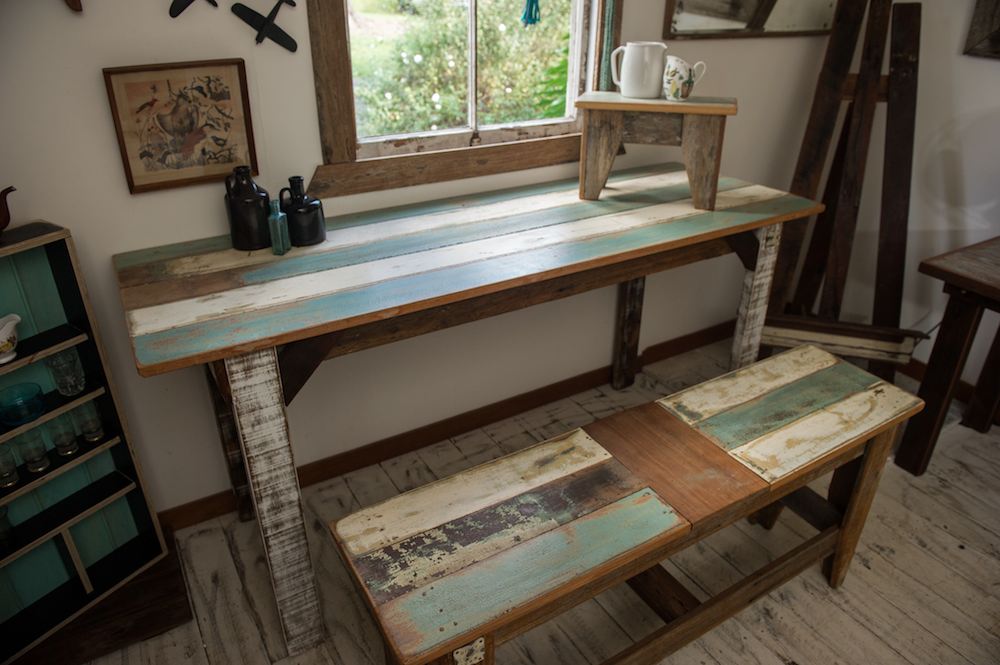
Restoration, renovation, recreation – Dirty Old Town doing what they love. Photo: Matthias Engesser/Narrative Post)
Helene agrees. “When we got together we’d finished school,” she says. “We travelled then moved into our first house and we had nothing so Johnny made coffee tables to sell. I went on a trip to Thailand and when I came home he had made a bed for us, because we’d been sleeping on a mattress on the floor. He’s been making furniture out of pure necessity and always out of recycled materials for over 20 years. He’d drag home old brick pallets and whatever he could find on the street. Back then, people in the city would just throw things out so he’d drag stuff home and make furniture, lighting and art pieces out of it. So he’s been doing it since he was in his 20s.”
But despite his love of restoration a young family meant having a job, and Johnny originally worked as a bricklayer to support the family. Finally at around the same time as the birth of child number four, Johnny put down one set of tools for another to create a business that could feed his family and his passion.
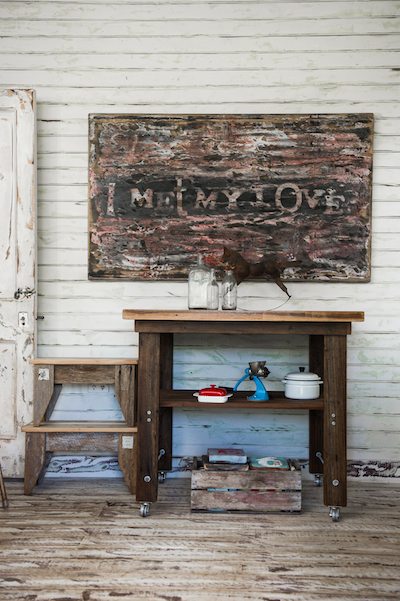
‘I met my love…’ and the rest, as they say, is history for Dirty Old Town. Photo: Matthias Engesser/Narrative Post)
“He was sick of bricklaying,” says Helene. “It was hard and it was horrible and it wasn’t something he was going to do forever. He had this interest in making things so he started doing it at home whilst still bricklaying and then we had John Joseph (our number four child). We were both at a crossroads where I didn’t want to have to go back to work for anyone else, I wanted to put my energy into creating a business for both of us to work at and it could be home based so we just went for it. Friends encouraged him to take his work to the markets so he did the Bangalow market with a few dining tables and the public response was overwhelming, it was pretty emotional. So he built up quite a bit of stock up and Dirty Old Town took off from there.”

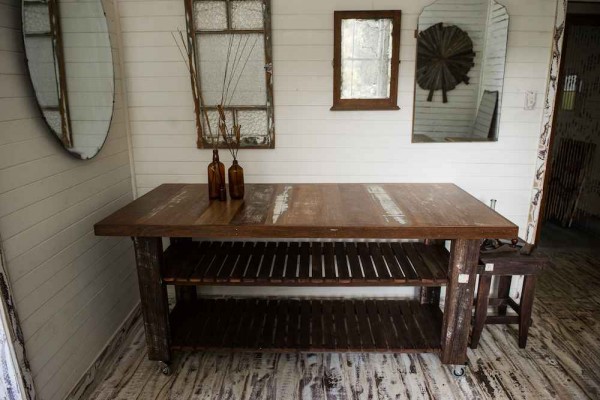
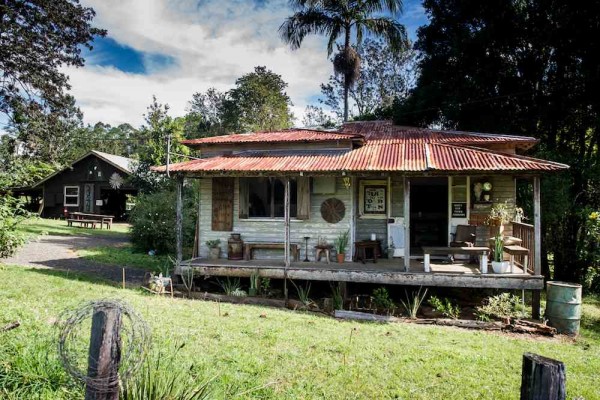
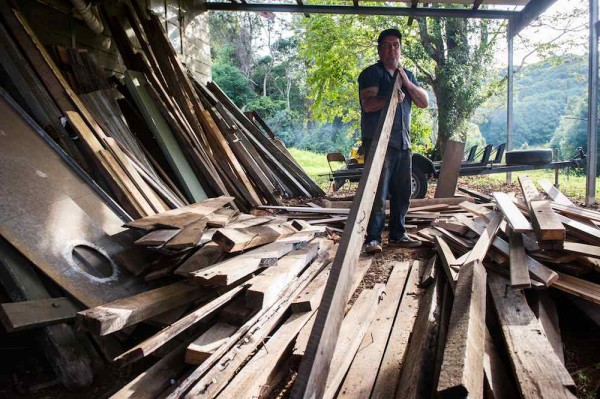
Clockwise from top: Showing off their trademark; Johnny examing timbers; workingspace on the property at Eureka and reccyled mirrors and handcrafted table. Photos: Matthias Engesser/Narrative Post)
With Helene’s marketing savvy and business vision the pair are a united team, moving their brand onward and upward with absolute authenticity. In the pipeline are plans to create a coffee table book, and partnerships, such as that with local Artist Joanna Kambourian, are expanding their range to include hand painted vintage feel signage, cushions, coasters and hand painted feature pieces. Their dream to take their family and business on the road and to constantly create new and innovative products makes them a brand, and a couple to watch. It’s a wonderful thing to spend time in the company of people whose passion for life is evident in their family, their home and in each unique, handcrafted piece of furniture they create.
To find out more about Dirty Old Town go to: dirtyoldtownfurniture.com
Facebook: DirtyOldTownFurniture.Collectables
Photography by Narrative Post – check out their website to watch the Dirty Old Town video narrativepost.com.au
Christina Giorgio has been working in the arts for 20 years and is the owner of Creative Consultancies. Check out her creativity retreats for women here: creativeconsultancies.com/bali
To register for her next ‘Left of Centre’ business intensive 0n June 13th and 14th in Bangalow go to: creativeconsultancies.com/business-planning-workshop-for-artists
https://www.facebook.com/CreativeConsultancies
The post The restorers appeared first on .
]]>The post Balancing control and chaos = creativity appeared first on .
]]>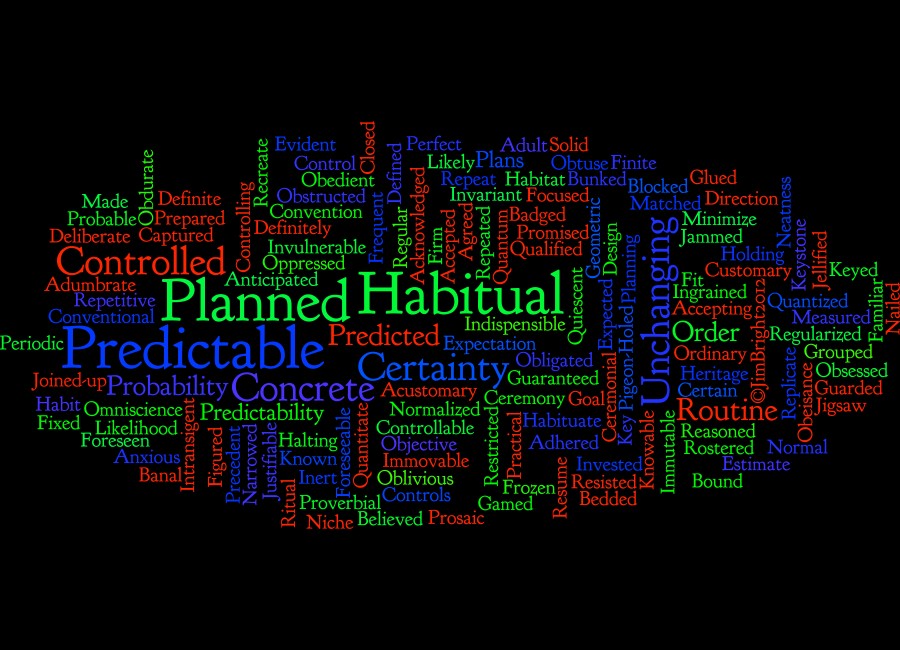
Byron-based Christina Giorgio cheerfully admits she’s a control freak – but, she writes, as a creative, she needs chaos from time to time to unleash her inner artist, and where better to find creative chaos than in Bali where she will be running a series of creative consultancies.
I am an organizational tyrant, aka control freak. So enforced can my organizational regimes be that my brother-in-law calls me the Chris-tapo, as in Gestapo meets Christina. I love schedules and plans and I have lists for my lists, which I’m sure is why I love events management and have a rather quirky combo of being an artist with a passion for business planning. I love to take the chaos and bundle it up beautifully in spreadsheets and tables. I give myself KPIs and berate myself for substandard work delivered outside of deadlines. I desire order where there is none and revel in knowing what to expect. For all these reasons I find it strange that over the past 15 years I have engaged in a love affair with South East Asia.
Without ever having lived there I’ve spent a combined total of about two years adventuring in Asia – from the jungles of Borneo to the chaos of India, the indulgence of Thailand to the wonder of the Himalayas. This region of the world has become my second home, and a source of adventure, inspiration, relaxation and joy. Why are these two factors at odds? Because Asia is chaos embodied and I’ve just confessed to being chaos adverse. This brings me to today’s key point, travel helps us to shift our thinking.
Over Christmas I spent a month in Bali lining up all my ducks for the creativity retreats I’m running in Ubud, Indonesia’s arts heartland. In spite of my best laid plans I had slow internet, no internet, no transport, no electricity, traffic jams, Hindu ceremonial total city shut downs, no shows, slow responses, confusing leads, wrong numbers, communication break downs, language barriers and Bali time to contend with. By all usual measures I should have been certifiable by my lack of ability to keep my regime going. Strangely, however, I felt just fine. In fact I felt inspired, invigorated and full of new ideas. How does this work? Apparently a fair few psychologists have looked into it and it goes something like this; distance (physical and conceptual) and/or travel = improved creativity and enhanced problem-solving.
PhD graduate student in psychology at Indiana University, Lile Jia, studied the impact of distance on creative problem solving. Results revealed that even setting our brains to travel mode enabled an increase in creative thinking. In another problem solving study comparing the abilities of students who had lived for periods overseas and those who hadn’t, William W. Maddux of INSEAD, a business school in France, and Adam D. Galinsky of Northwestern’s Kellogg School of Management in Chicago, discovered a creative advantage in the travellers. The pair supposed that this was due to an open-mindedness in the thinking of those who had lived abroad and in turn experienced a range of ways of living that enforced a validity of many diverse approaches to everyday problems.
Young children and babies have an ability and enthusiasm to spread their attention in multiple directions, an adaptive behavior for small people learning about a big world. This behavior trait is one that by adulthood most of us have learnt to dampen in favour of a more singular focus. Developmental psychologist Alison Gopnik likens the open-mindedness inspired by travel to the type of brain activity of a baby. Inundated with neurochemicals, our adult brains fires up in the wake of travel and its new and foreign stimuli and we once again experience a wonder and curiosity that stimulates creative thinking. It seems right too. On a personal level some of my best songwriting has been achieved whilst on the travel and some of my most creative life solutions have emerged when outside of my usual routine and environment.
For creatives, the ability to step out side the day to day into new and stimulating settings is a must for the creative process. A new environment can remove blocks and inspire new material and ways of working. So whether it’s a cabin in the woods, a weekend getaway, a favourite café in your hometown or more adventurous travels overseas, a change of scenery is an amazing springboard for creative productivity.
Fancy giving your creative muscles a flex? Check out these inspiring creativity retreats for women and mammas in Ubud this July https://creativeconsultancies.com/bali-creativity-retreats/. Be in the first 5 to book in and get yourself a $300 early bird special – that’s a lot of bonus massages at the pop up poolside spa or one huge shopping spree at the local artisan markets!
Christina Giorgio is an arts business and creativity consultant. You can learn more about her at www.creativeconsultancies.com.
The post Balancing control and chaos = creativity appeared first on .
]]>The post Gorgeous geometric glass appeared first on .
]]>On a sunny day, walking down the main street of Bangalow, if you look carefully you’re likely to see a little bit of magic when Asaf Zakay’s beautiful glass creations send shards of light dancing across the street, writes Christina Giorgio.
The Byron Shire’s very own geometric glass artist, Asaf Zakay, first studied glass art in a short course in Israel, his homeland, in 2002. “I became frustrated quite quickly with the two-dimensional approach,” Zakay tells me, over a cup of lemon grass tea in his Bangalow show rooms, which also doubles as a studio, as I relax into watching the hypnotic process of one of his glass creations coming together.
It’s been ten years now since Zakay settled in the Byron Shire, in 2005, after some years living in the madness and magic of India. He’d always been a creator, and making geometric shapes from a variety of materials, and at some point, he says, “I was inspired to create a pendant using glass.” Intrigued by the idea of three-dimensional shapes inspired by the Star of David, he began to experiment at home, and when he left Israel on his travels, he’d created a small collection of pieces he gave to friends and family. Packed in his suitcase, however, was a small cutting knife for glass and few glass triangles that survived the journey.
It wasn’t until he was working from a studio on a property in Rosebank, in the hills behind Byron Bay that Asaf was first introduced to the idea of sacred geometry as a universal symbol. “I had no idea about it,” he explains. “I thought the concept only belonged to Israel. I was making these shapes with no real idea. I knew it was a spiritual symbol but I had no idea that it is a full universal symbol and that the symbol is the universal language. There’s nothing that lives and exists on the planet that’s not based on the same ratio of every single shape I create.” Based on a mathematical ratio discovered by Leonardo Fibonacci, the Fibonacci sequence is a number that repeats itself all endlessly in nature – resulting in the Golden section, or Golden ‘mean’, as it’s often referred to – it provides the mathematical and spiritual basis for Asaf’s work.

The Fibonacci Spiral discovered by Leonardo Fibonacci (1170-1250) is an endlessly repeating pattern in nature.
Zakay started his full-time glass artist career selling at the local markets, and although the initial years held some challenges Zakay Glass Creations grew into a thriving business. “The first year when I was out at the markets it was a bit – not hard – but almost just taking you to all those places where you think if I should keep doing it or if I should stop doing it.” He questioned whether he would be better off joining the ranks of other importers selling Asian trinkets, clothes and homewares, but he was supported by his former partner, Samaya, a savvy and motivated business woman, who was able to compliment Zakay’s creative hard work with a strong marketing drive. On the road, the pair took his work to trade shows across the country and continued to sell locally at the market and steadily they built a loyal customer base.
After the couple separated Asaf was thrown into a new era. “All of a sudden I had to face the computer, had to face paying mortgages and wages and insurance and all the rest of the bills that we have to deal with,” he says. For many artists facing the nuts and bolts of the business face of their work can be a challenge, and for Asaf stepping into a new role was not only a challenge but also a life changer. He has risen to the challenge and with a team of support staff has taken his Facebook following to over 10,000 and is opening into new markets domestically and internationally.
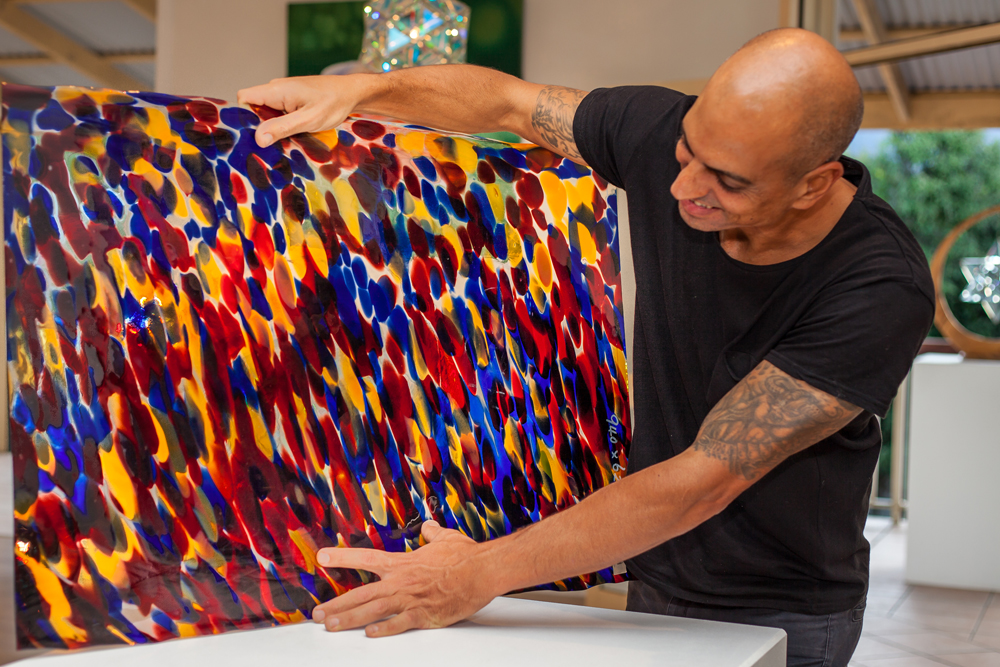
Hand Blown Glass; part of Asaf’s new ‘one off’ sculpture range
The Zakay Glass Creator, Asaf Zakay, with a new piece of German handmade blown glass.
Zakay Glass Creations has now found its home in a beautiful gallery space in Bangalow. In the back corner of a bright and airy room, filled with rainbows of refracted light and breezy views over Bangalow’s main street, Zakay can be found working on his stunning glass creations. While he dreams of spending more time creating on the land, surrounded by his horses and immersed in nature, he is embracing this new phase of his thriving local business.
For other creative business owners out there and arts professionals Zakay shares these words of advice –
- Fully believe in what you do and love it.
- Don’t listen to anyone is the best advice. Just do your thing. When we first started 10 years ago, even my partner at the time would tell me to forget about it and just import stuff, and I was like: “You know what, if people don’t buy a product of $100 lets make a product for $200, if they don’t buy the $200 let make one for $400.”
- Have a really strong drive and go for it! Don’t sit and wait for things to happen. We all say what’s meant to happen will happen. Sometimes it’s meant to happen but it doesn’t mean you’re not meant to get out, pick up the phone, get in your car and drive somewhere and make it happen.
If you’re a local creative wanting to see your business thrive, register for a planning intensive for Arts Careers and Businesses – March 7th and 8th at Bangalow Tea Houses and Museum. https://www.creativeconsultancies.com/business-planning-workshop-for-artists/ or like www.facebook.com/CreativeConsultancies for tips, articles and inspiration for artists.
The post Gorgeous geometric glass appeared first on .
]]>The post Lou Bradley gives us the low down on Moonshine and music appeared first on .
]]>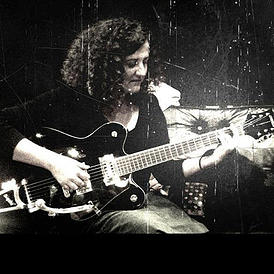
If you live in the Northern Rivers, chances are you’ve stumbled upon Lou Bradley performing her alternative country tunes at the local markets, cafes and pubs, writes Christina Giorgio. Catch her while you can, because this country star is rising fast.
There’s no doubt that Lou Bradley’s on fire. Recently nominated for a Golden Guitar at the Tamworth Country Music Festival, and with two new albums under her belt, as well as a new role as artistic director for Murwillumbah’s inaugural country music festival, Bradley kicked off her music career sneaking into the backdoors of inner city Sydney pubs and bars.
Bradley realized early that she had a deep affinity with music. “My first memory is of being four-years-old sitting on a train holding a cigarette lighter and singing Marcia Hines songs to a whole bunch of people – my parents used to make me sing!” explains Bradley. Leaving home at 15 she was inspired by a song writer in the rock band she was playing with to become a professional musician, but it wasn’t until she relocated to the North Coast that she found her own creative voice as a songwriter.
Bradley and her husband and musical partner Phil Chaffer relocated to the Northern Rivers with their three young children in 2000 in search of their happily ever after. It wasn’t until they moved to the hills behind Huenbrook to a stunning 30 acre property with waterfalls and the natural beauty the Northern Rivers is famous for that Bradley started writing songs. She found a local small scale studio where she was able to record some demos and an EP which became the starting block for her own originals career.
One day, while they were driving through the mainstream of Mullumbimbimby Bradley spotted local independent music trailblazer John Butler in town. “I jumped out of the car and said ‘Phil, pull over I want to give John butler my EP’ and he was like ‘oh my god don’t do that, how embarrassing’,” she says. But this somewhat brazen move was the kick start for her career and lead to her being one of the first artists to be awarded a John Butler seed touring grant in 2005. Filling a minibus with her family and a Mullumbimby entourage they hit the road playing outback towns with Bradley quickly establishing herself as a touring artist.
Bradley’s other door opening move was her acceptance into the Country Music College. Inspired by a gig by Kasey Chambers at the Byron Blues Festival, Bradley realised that there might actually be a place for her in the Australian country scene. The intense two week program proceeding the Tamworth Country Festival introduced Lou to the historical roots of country as well as some major industry players including – Bill Chambers who invited her to perform a song at his Tamworth show.
The friendships and connections forged at her first festival have served her consistently throughout her continuing career. “To me it’s networking but it’s also just like a family,” she says. “You kind of build your friends and family around you. I think the networking side is really important if you love it, but don’t do it just for the sake of it.” She went on to record and release her ARIA and CMAA Golden Guitar nominated debut album Love Someone in 2007. It was a self-funded investment in her career that paid dividends not only financially but also in establishing Bradley as a respected player in the Australian music scene. Her latest album, Moonshine, set for release next week, was recorded live over two days with Bill Chambers in his central coast studio.
There have been ups and downs along the way. With a tight knit family to support there have been times when the music has had to go on the back burner. Bradley has never let this stop her from holding fast to her vision of a shining career. Even a stint working pumping petrol just served as a reminder to keep working hard on her dream “It inspired me to really keep going because I don’t want to work in that petrol station forever,” she says. “Just keep your hand in, keep your dream alive and know that just because you’re working pumping petrol doesn’t mean you’re not an artist, it’s fine you just got to pay bills!”
It seems that 2015 will be Bradley’s time to shine. Having secured management with Footstomp, who represent musicians such as Busby Marou and Melbourne Ska Orchestra the future of this local artist is looking very bright. Moonshine and The Other Side are fresh off the presses ready to launch, there are plans to expand her touring base to Canada and the States in the not too distant future and her children are now young adults. The doors to a new era of Lou Bradley’s musical journey are wide open and I for one am excited to see what the future will hold.
For more about Lou, including tour dates and tracks visit loubradleymusic For the full interview creativeconsultancies-lou-bradley/
If you’re a local creative wanting to rock your arts career register now for Left of Centre – A planning intensive for Arts Careers and Businesses – March 7th and 8th at Bangalow Tea Houses and Museum. creativeconsultancies.business-planning-workshop-for-artists
The post Lou Bradley gives us the low down on Moonshine and music appeared first on .
]]>The post Getting down to business at the Arts Hub conference appeared first on .
]]>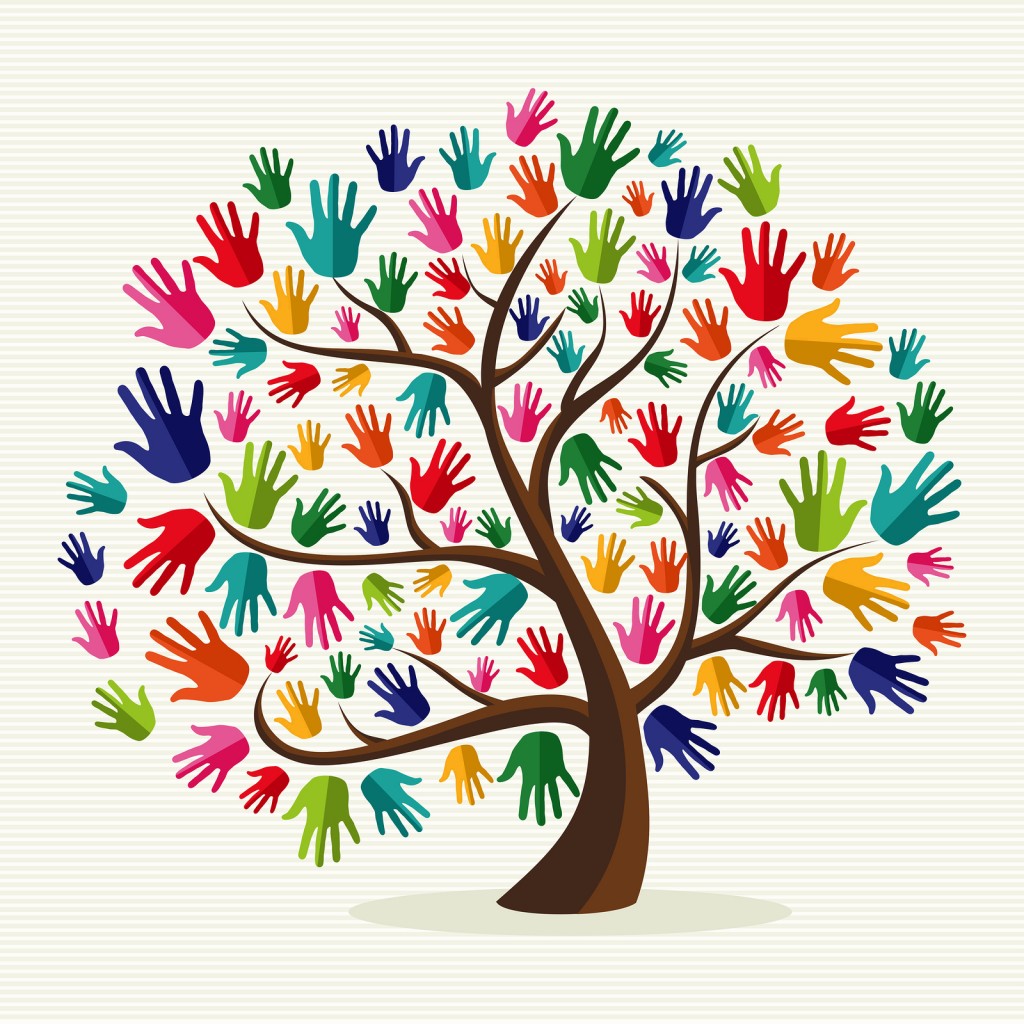
Christina Giorgio braved the erratic Melbourne weather – hot one day, freezing the next – to attend the inaugural Arts Hub conference in Melbourne, to find out more about her favourite subject – the arts as a business. She shares what she found out with Verandah – some good, some not so good, in her opinion…
Before I get into the business side of things, I’d like to share a story about the importance of the arts to a community, which came as a timely reminder during the conference from Steph Walker, Executive Director, Performance Space and former artistic director of the Christchurch Arts Festival.
After the devastating earthquakes hit Christchurch in 2011, the once bustling city centre was left in ruins and people living in the city were without water, electricity, sewerage and other basic services, some of them for up to a year. Amidst the death toll and sheer destruction The Christchurch Arts Festival was scheduled to run. With every single venue destroyed and the organising members themselves living in chaos, a decision was made to go ahead and stage the Festival. From reflective dance performances, wearable arts made from materials found amongst the ruins to celebratory music performances, the festival became the context for catharsis, connection and an opportunity to find joy and release in amongst the darkness. It was an uplifting moment during the sometimes depressing statistics emerging from the conference!
For arts industry professionals Arts Hub has long been the go-to-place for the best arts jobs with an array of professional development articles and resources. This particular conference had caught my eye because of its bent on my pet topic of Arts business models and latest best practice in strengthening the financial status of creatives and the arts in general. It certainly met the brief and I took home a swathe of resources, ideas and information that I’m excited to get blogging on, sharing and teaching with clients. For me three core topics stood out with varying degrees of positivity:
- The opportunity of philanthropy
- The inspiration vs perspiration argument
- The undoubtable power of the arts to inspire and connect communities.
The philanthropy ride started off well with Anna Draffin, Deputy CEO of Philanthropy Australia’s keynote presentation ‘Make philanthropy work for you’ which had me inspired to consider philanthropy as the next big thing in arts funding. With generous gen Y-ers fronting up as potential lifetime donors and an enthusiasm from impact investors supporting social benefits of the arts as well as strengthening their financial position, it felt like an amazing opportunity for the arts to stabilise and improve its financial position through a diversified funding model that included philanthropists who would not only offer cash investments but share their knowledge, connections and business nous.
Unfortunately my utopian vision of a philanthropic arts industry was soon to be blown to pieces as the rollercoaster ride took a turn for the worse for me by the discussion panel, which left me with a bitter taste in my mouth and an overwhelming desire to quit the arts altogether and jump straight to the after conference drinking. I’m sure the aim was to provide insights and get everyone realistic and savvy in negotiating this new world of opportunities, but for me the discussion made me decidedly uncomfortable.
It seemed to me that the reality of philanthropy was that already overworked artsworkers (busting their arses for pitiful wages) should somehow find additional reserves of energy to pander to rich people’s whims and agendas. Not only should philanthropists be wooed with regular coffee meetings for years at a time with no assurance of a financial return, if they do eventually front with the cash all staff at said organisations should have framed pictures of these esteemed benefactors on their desks to ensure these donating heroes are welcomed by name and open arms. As we should appreciate how hard these philanthropists have worked for their dollar (even though in our poorly paid arts jobs we will be lucky to even own our own homes but work just as hard) we must approach with care and decorum, certain not to offend or misstep with our requests. The pragmatist in me sees that a corporate schmoozing model can work if built in carefully to organisational funding structures and workplans but the realist and burnt out artsworker in me says unless terms of engagement are vastly overhauled philanthropy will certainly not be the silver bullet for a majority of creative businesses and organisations.
Next thought was based on some Australia Council for the Arts statistics. According to the research data four months after graduating more than half of arts graduates can expect to still be job hunting. According to the ABS the average wage of people in full time employment is $74,724. Arts administrators and managers, who must have university qualifications, can fight it out for full time wages of between $41,000 and $80,000, with the higher end reserved for a select few, usually with decades of experience and postgraduate education. Staff retention levels are dismal, way worse than even health, possibly due to an unstable and politically driven funding model that sees positions swaying in the breeze of uncertain finances. And for artists living off their creative work the news is (of course) worse, 64% are earning less than $10,000 per year. And did I mention if you’re a woman in the arts, you’ll likely earn less than your male counterparts? So where was the good news in all of this?
From my perspective the positive could be taken from another set of statistics that says talent is only accountable for 11% of the important factors that influence your ability to succeed in the arts. So for creative types disintegrating into a mess of self-defeating, tortured artist angst there is some hope. Tony Stephens, former plumber and now esteemed Director at the very successful Artbank thanked his plumbing past for a connection it gave him to the average Aussie. His observations also echoed the same kind of sentiment that critically acclaimed talent can sometimes be meaningless to the lay person who likes what they like. So with raw, critical “talent” lowered down the ranks there is an opportunity for creatives willing to get their hands dirty.
The rest of the stats distribution sees hard work and persistence at 29%, passion and self-motivation at 27%, support and encouragement at 13%.
Which means get yourself some good work habits, stick at it, surround yourself with positive and supportive people and your passion and drive might get you over the line regardless of an otherwise dismal picture. These factors may even push you into the 10% of artists who make more than $50,000 a year.
It reminded me of a favourite quote of mine by Pablo Picasso: “The purpose of art is washing the dust of daily life off our souls.”
For practitioners of the arts and those working to support its creation we are in a position to bring healing, celebration and interconnection to our combined life experience and in my book those are great reasons to keep searching for ways to make the industry survive and indeed thrive.
For Northern Rivers artists and creative industry businesses who find them selves overwhelmed by the practicalities of thriving in this tough industry and are in need of some support and encouragement Christina Giorgo offers help. She has been living and breathing the realities of the arts industry for almost 20 years and has turned her attention to helping artists to switch their business minds into gear and supporting them to create action plans aimed to inspire and motivate. She is running a weekend intensive at Brunswick Valley Community Centre on November 15th and 16th. The weekend intensive costs $120 for two mornings of guided plotting and planning including morning tea. Email [email protected] for a registration form. Places are strictly limited in order to provide each artist and creative business with a level of tailored support.
The post Getting down to business at the Arts Hub conference appeared first on .
]]>The post The Art of Business planning appeared first on .
]]>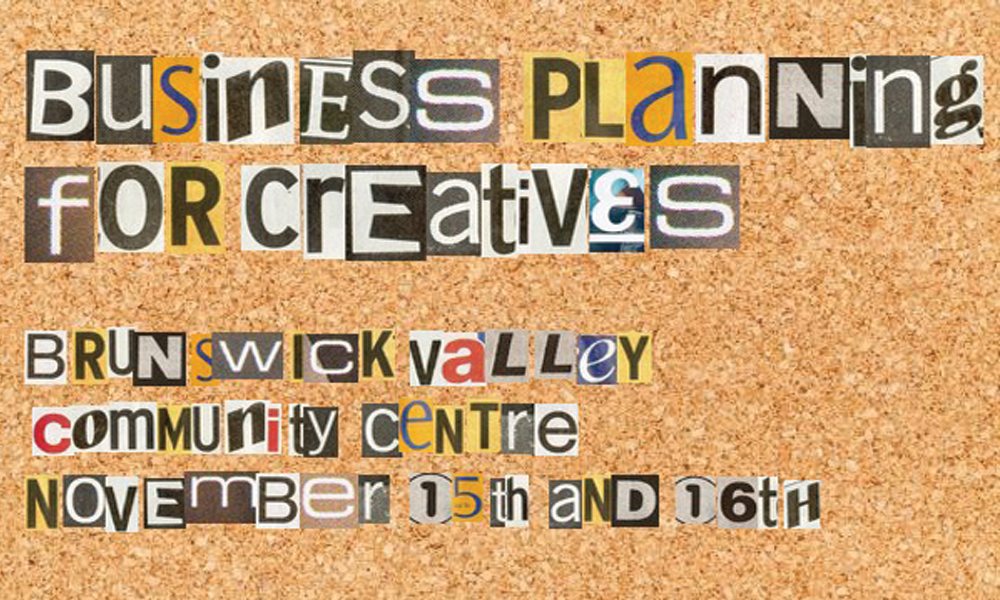
Art & Logic: Business planning for creatives with Christina Giorgio.
Christina Giorgio has been involved in the arts and cultural sector for almost 20 years. She’s worked as a full time community cultural development coordinator and as a strategic planner she’s created numerous arts business plans. As an event coordinator she’s produced arts events ranging from exhibitions and installations to performances and festivals. Christina studied film and theatre at university and has a certificate IV in business. These days she’s the owner of Creative Consultancies and from her base near Byron Bay she’s turning her attention to helping the ‘creatives’ of the Northern Rivers understand the importance of a great business plan.
“As a musician, film maker and writer, I get it. For creative types the concept of business planning seems tantamount to extinguishing creative mojo and about as enjoyable as poking yourself in the eye. But as Thoreau so aptly put it “If you have built castles in the air, your work need not be lost; that is where they should be. Now put the foundations under them.”
Sure the road to great creative success is often lined by lucky breaks and serendipitous turns of fate, but too often the road is also paved with poverty, depression and mind numbingly banal day jobs. As creatives we have lofty dreams but succumb to inertia when it comes to action, at other times we are a frenzy of production, and sometimes we work so hard that our dogged attempts to carve out a living from our ‘art’ kills the creative passion.
This is where the business plan comes into its own. Whether you’re a visionary dreamer, prolific creator or master hard worker, all three aspects need to be pumping in unison – and to me there are three core ingredients for achieving your creative goals. Vision, direction and hard work. They’re all important. They’re all essential. I think of it as going on a road trip. You need to work out where you’re going, check your road map and plan out your route and finally jump in the car and drive.
I meet lots of artists and creative people who have one or two of these factors down pat. They have ideas, drive and passion in spades, but they also have cupboards filled with unsold CDs and spare rooms lined with galleries full of artwork. Put a plan in place and you can create a framework that supports the areas you struggle with and nurtures the aspects you’ve refined.
If you think some support in creating a workable and visionary plan would help you get on track why not join me and other creative types for a weekend of plotting and planning on November 15 and 16 at the community centre in Brunswick Heads?
The course is $120 including morning tea for two mornings of supported planning and two afternoons of self-driven planning and networking with other creative types. Places are strictly limited so each artist and creative business gets some tailored direction. Come and join us and get ready to kick start 2015 in a flurry of creativity and productivity! To book or for a registration form email me: [email protected] For more tips and inspiration for creatives come like me on facebook www.facebook.com/CreativeConsultancies or go to my website: creativeconsultanciesThe post The Art of Business planning appeared first on .
]]>
